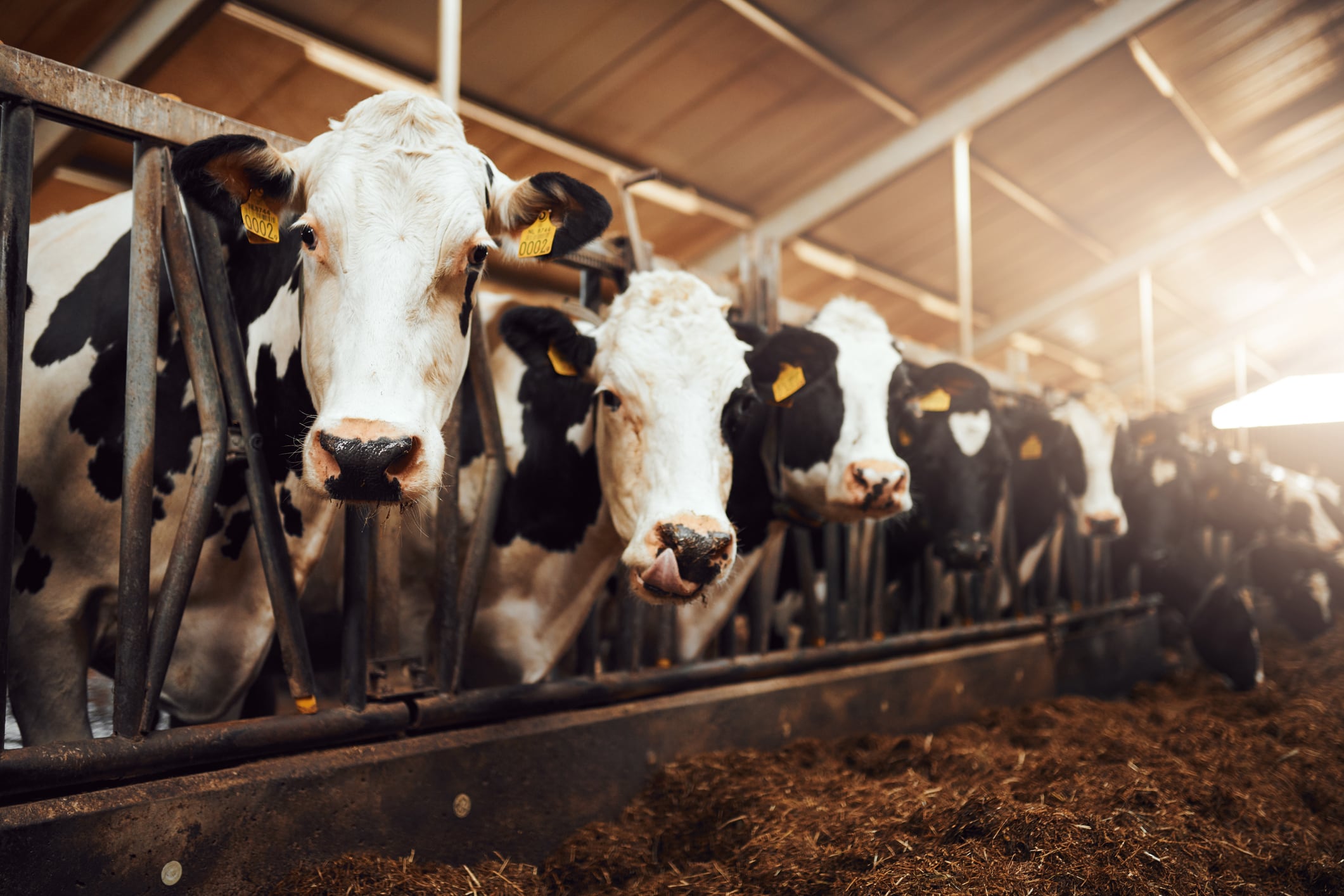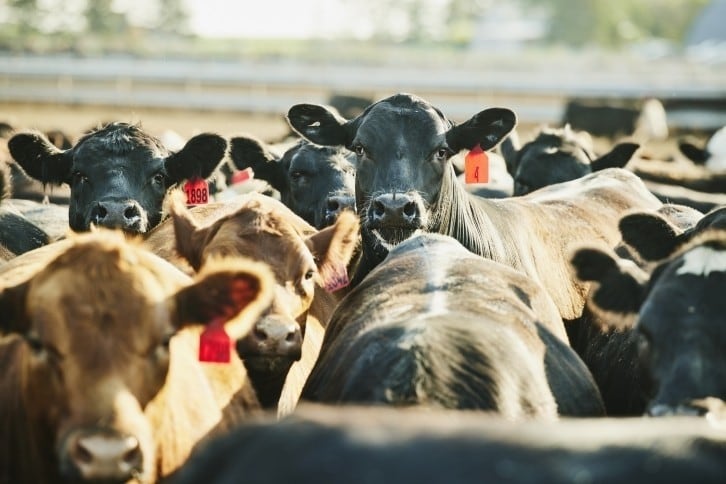In an open letter issued in June 2025, climate scientists warned the New Zealand government against adopting a methane target based on ‘no additional warming’ and told the prime minister to reconsider swapping GWP for GWP* for methane accounting. Targets consistent with ‘no additional warming’ would imply current methane emissions levels are acceptable and should continue instead of being reduced, the signatories claimed.
Methane is the second largest contributor to global warming after CO2, with more than half of global emissions stemming from human activities in three sectors: agriculture, waste and fossil fuels.
Under current trajectories cited by UNEP, total methane emissions from human activities could rise by up to 13% between 2020 and 2030. Emissions from the agriculture and fossil fuel energy sectors are comparable, at around 120-140 million tonnes per year, the report concludes. Within agriculture, livestock farming is the largest contributor.
Collectively, methane emissions can be reduced by 45% by 2030 through targeted and behavioral measures, the report estimates.
‘No additional warming’: A ‘recipe for increased concentrations’
In a recent press briefing held by Greenpeace, Mark Howden, Australasia’s top representative on the IPCC and the former director of the Institute for Climate Energy and Disaster Solutions at the Australian National University, explained why reducing biogenic methane is crucial to meet global climate targets.
“There is no indication that we’re actually on the track to actually reach the methane pledge,” he opened. “So our emissions continue to go up, they’re not going down as promised under the Global Methane Pledge, which said 30% reductions by 2030 against 2020 levels.”
A lot of the confusion around methane mitigation comes from the understanding about its lifespan in the atmosphere, he added.
“Some people say methane has a lifespan of 12 years - that’s actually not referring to what most people think of as a lifespan. It’s more equivalent to the half-life of methane in the atmosphere. After 12 years, there’d still be 30% or more of the methane left in the atmosphere. After 30 years, there’s probably still 10%, and it’s only starting to really disappear after 60 years. So just keeping methane emissions at current levels is a recipe for increased concentrations.”
But there’s an upside – methane emissions don’t need to go all the way down to net zero. “Carbon dioxide being a long-lived gas, the only way we can stop accumulation of that is by effectively going to net zero,” he said. “Whereas methane, you don’t have to quite go to that 100% reduction…because methane does have a shorter lifespan.”
“To reduce future global warming, we have to reduce [methane] emissions very significantly, but not necessarily to zero.”
Mark Howden
GWP 100 vs GWP*: What’s the difference?
This is also why it’s important that governments don’t change the way they measure their GHGs, particularly by adopting GWP* in the place of GWP 100.
Howden explained that GWP was established as a tool for policymakers who wanted ‘a common currency for greenhouse gas emissions’ and a way to compare GHGs. “It’s a metric that allows that currency conversion… [for example] when we look at the way of converting a methane into a carbon dioxide equivalent. It’s transparent, it’s cheap to apply, and it’s very predictable. Any given methane emission, you can tell exactly what it means in carbon dioxide equivalence.”
GWP 100 stands for Global Warming Potential over 100 years and is the most common metric used to set GHG reduction targets and establish a baseline. “It is effective at generating a single number from a basket of gases,” Howden explained.
“On a farm, you can have emissions of carbon dioxide, methane, not just oxide, and other gases, and you can come up with a single number. It enables integrated tracking of how you’re going in terms of greenhouse gas emission reductions as a basket of gases, and that means you can adjust your policy accordingly.”
But GWP* is ‘a very different beast’, Howden said. “GWP STAR basically splits the warming potentials into a short-lived and a long-lived component. And so, it uses various parameters to do that, and it bids you in a specific timeframe to sort of generate that long-term perspective.” It grandfathers your existing emissions versus past emissions, he added.
In effect, it’s swapping a simple calculation for a very complex one. “[In GWP*], we have a calculation which is not good for that common currency comparison, because you’re comparing things on different timescales and different scenarios where those variables can change,” he said.
Importantly, it could hamper meaningful emissions reductions from the livestock sector.
“We’re looking at analysis which is very difficult to predict the consequences of a given management change because that timescale of methane effects is actually dependent on your past activities. It’s not only dependent on your future activities; it doesn’t allow you to calculate the marginal impact of a change in methane, whether you go up or down. It doesn’t provide constancy in terms of calculation, because you’ve got inconstancies across circumstances and across time, and it builds in fundamental inequities into the system.”
For example, smallholder farms and regions with smaller or emerging livestock industries are disadvantaged – adding another cow to a small herd would mean increasing methane emissions from a low baseline; while bigger operations are rewarded for marginal emissions reductions despite starting from a higher baseline.
GWP*: ‘Get Out of Jail Free’ card?
“The problem, we actually have to cut methane,” said Shefali Sharma who is the global agriculture campaign lead at Greenpeace. “We can’t just not add more, we need to cut it. So, and I think companies obviously see this as a great get-out-of-jail-free card.”
Asked to rate the methane mitigation commitments made by some of the largest dairy groups – including Nestlé, Danone and Lactalis USA – who have signed up to Environmental Defense Fund’s Dairy Methane Action Alliance (DMAA), Sharma told us: “The Dairy Methane Action Alliance is a first step in what dairy companies need to do to cut methane. It does signal to other dairy and meat companies that perhaps they need to start accounting for methane.
“But the initiative is currently not strong enough to drive real change in the sector– it does not require companies to set reduction targets which is a major weakness of the scheme.
“It’s therefore not surprising that apart from Danone, no other DMAA member has set concrete methane reduction targets. It’s also not clear to us what it means if a DMAA company does not create a methane plan or one that is actually meaningful.
“Given the urgency of cutting methane now, setting mandatory accounting standards based on science and reduction targets would be way more effective in driving change than voluntary measures.”
“The critical point is that emissions need to start coming down from the current high levels,” Sharma added.
“Meat and dairy companies have played a significant role in increasing methane emissions by substantially expanding herd sizes, particularly over the last decades. This needs to stop and go in the opposite direction.”
Sharma added that some companies are moving the goalposts to suit their agenda, meaning that standardizing accounting practices would be crucial. “What we’ve seen by monitoring companies’ that are reporting emissions in general is that companies pick and choose their baselines. They sometimes change the emissions factors they use from one day to the next.
“And they change the scope of what they will report. Ideally, they follow scientifically-approved global standards that are required by governments. Otherwise, it leaves the door wide open to greenwashing.”
“And the industry should be required to report their absolute emissions and set targets to reduce them.”
Shefali Sharma, Greenpeace
“Emissions intensity targets are not credible because they allow for overall emissions to increase if production increases,” Sharma added.
The bottom line is that methane emissions from livestock farming need to come down to avert greater climate crisis and in turn limit farmers’ own exposure to extreme weather events such as droughts.
“Methane is our climate emergency break and the livestock sector has to do its part, not least because a warming planet is going to hit the industry hard, but also because it will have disastrous consequences for the world.
“That means companies have to reduce absolute emissions of methane and overall, and report on these emissions.”



